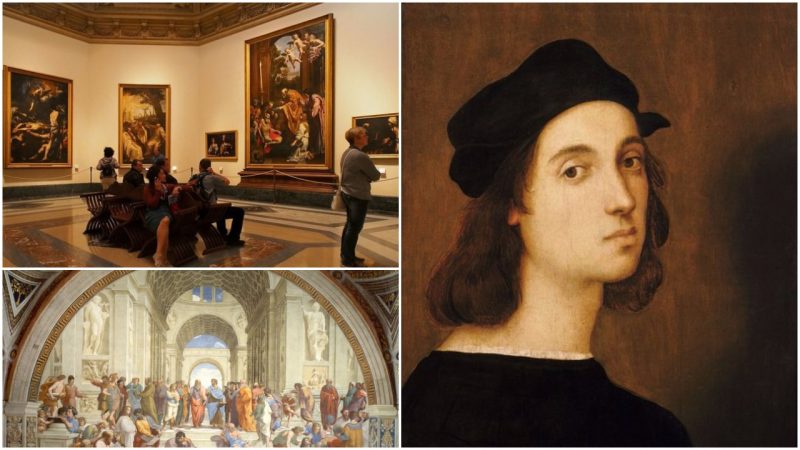Inside the Vatican Museums are many Renaissance art treasures. During the early 16th century, certain rooms were used as Pope Julius II’s living rooms. Glorious works of da Vinci, Michelangelo, and Caravaggio can be seen inside, with long lines of people trailing through the Museums to witness the priceless frescoes.
Renaissance masters like Leonardo and Raphael have a penchant for hiding gold under vast layers of paint, left to be found only by the most curious (or lucky). Two previously unknown painted figures have been discovered in plain sight in the Constantine Room of the Vatican Pontifical Palace, attributed to the great painter Raphael.
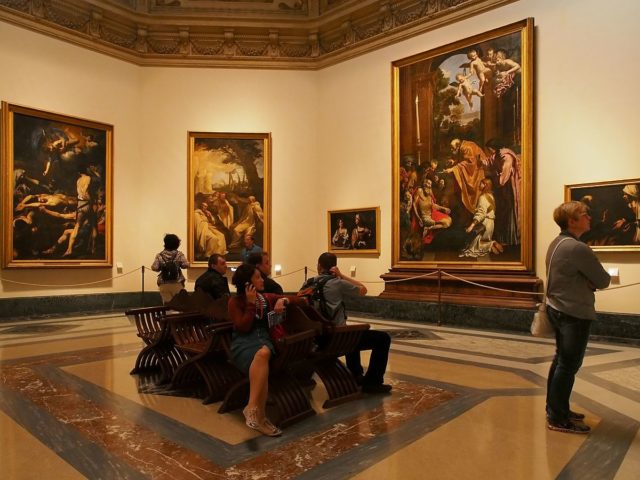
The Constantine Room, the largest of the four rooms, is adorned with four landscaped frescoes that tell of many significant events of Emperor Constantine I, the first to recognize Christianity in the Roman Empire. The Vision of the Cross, The Baptism of Constantine, The Battle of Constantine and Maxentius, and The Donation of Rome–all are painted with elaborate detail and vibrant colors.
Reportedly, in 1509, the Pope ordered Raphael and his skilled students to liven up the walls of the papal residences, all of which were painted with a different thematic and detailed scenery. This was not to be, however, as Raphael suddenly died in 1520, leaving only his students as heirs to his distinctive technique.
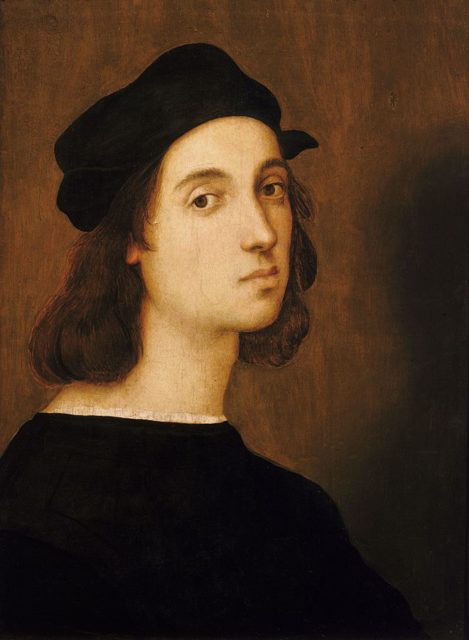
Art experts held a theory that the High Renaissance painter only sketched the schematics for the frescoes in the rooms, while his pupils meticulously executed his vision due to his untimely death.
The hidden paintings were accidentally discovered during a restoration process which was scheduled in March 2015. After a couple of arguments, experts finally agreed that the hidden figures in the fourth room, Emperor Constantine’s room, bore the master’s signature oil technique. There was no doubt that it was the distinctive handiwork of Raphael, greatly differing from his students’ technique. This is a very significant find, as it’s not every day that one simply finds a hidden Raphael painting.
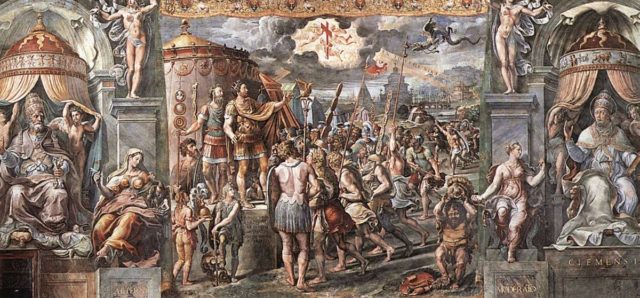
In one fresco, The Vision of the Cross can be seen. Depicted on it is the moment when, before battling his brother-in-law Maxentius, Emperor Constantine allegedly saw a holy cross in the sky, a premonition of victory. Legend has it that Constantine placed a cross on every banner in his army, believing he was favored by God. At the edge of the large-scale fresco, next to Pope Clement I, floats a woman in a blue dress who allegorically represents Friendship. In another fresco, The Battle of the Milvian Bridge, hidden in the far right corner in the battle between Constantine as the victor and his pagan brother-in-law Maxentius, shows the figure of Justice, the second allegory.
In opposition to the vague paintings in Constantine’s Room, Raphael’s other contributions are far more visible and recognizable in other parts of the Vatican. The majestic piece of art School of Athens can be seen in one of the other rooms of the Pontifical Palace.
Head of the Vatican Museums’ art research and art historian Arnold Nesselrath states: “We know from 16th-century sources that Raphael painted two figures in this room as tests in the oil technique before he died. According to the sources, these two oil painted figures are of a much higher quality than the ones around them.”
“Raphael was a great adventurer in painting and was always trying something different,” Nesselrath adds. “When he understood how something worked, he sought a fresh challenge. And so, when he arrived in the largest room of the papal apartment, he decided to paint this room in oil, but he managed to paint only two figures, and his students continued in the traditional method, leaving only these two figures as autographs of the master.”
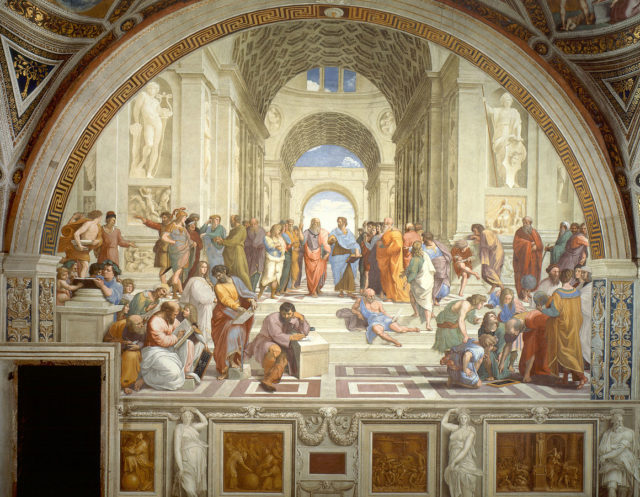
La Stampa, the Italian newspaper, first reported the news of the fascinating discovery. Nesselrath told La Stampa that the 16th-century sources say Raphael indeed managed to paint only the two allegorical figures before his death, leaving the rest to his students.
“By analyzing the painting, we realized that it is certainly by the great master Raphael,” states Fabio Piacentini, a restorer in the museum. “He painted in oil on the wall, which is a really special technique. The cleaning and removal of centuries of previous restorations revealed the typical pictorial features of the master.”
